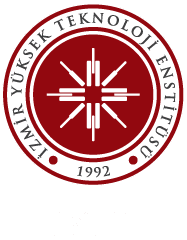ESE Seminer-Biyokütlenin Termokimyasal Dönüşümü
THERMOCHEMICAL CONVERSION OF BIOMASS
Dr. Ali Umut Sen
Centro de Estudos Florestais, Instituto Superior de Agronomia, Universidade de Lisboa, Portugal
Place: Engineering Faculty Building B, Meeting Room
Date: April 18th, 2024; Thursday@10:00-11:30
Abstract
The global environmental and economic challenges linked to fossil fuel use have prompted the search for renewable alternatives for materials and energy. Biomass emerges as one of the most significant renewable sources in the world given its versatility and widespread distribution. However, its wide chemical variation limits conversion. An efficient biomass utilization requires a detailed chemical composition of the specific biomass for selecting the optimal conversion processes. In this regard, the biorefinery approach has gained importance wherein biomass is processed through cascading unit operations. We studied cork-rich bark of Quercus cerris (Turkey oak) as a case material to develop biorefinery routes. The results indicate that Q. cerris bark contains a considerable amount of extractives including triterpenoids, antioxidants, and bio-active materials, and may yield charcoals, adsorbent biochars, and activated carbons. We propose extraction followed by slow or fast pyrolysis for the valorization of the bark.
Short Bio:
Umut Sen is a researcher at University of Lisbon, Portugal. He graduated with degrees in Forest Industrial Engineering from Istanbul University and Chemical Engineering from Instituto Superior Técnico. He holds a PhD degree from the University of Lisbon. During his PhD and postdoctoral studies, he conducted scientific missions in Portugal and at various European Universities, including the University of Aveiro, the University of Girona, the University of Ghent, and the Karlsruhe Institute of Technology. Currently, he is focused on the conversion of biomass into fuels, materials, and chemicals through thermochemical methods, solvent and supercritical extraction, as well as adsorption. He has specialized in distinctive biomass materials such as tree barks and waste lignocellulosics from agricultural or forest origin.
